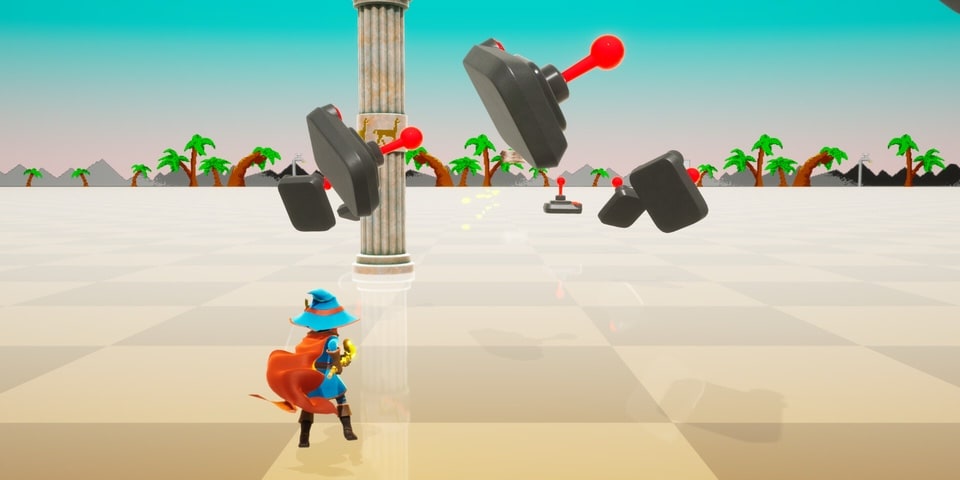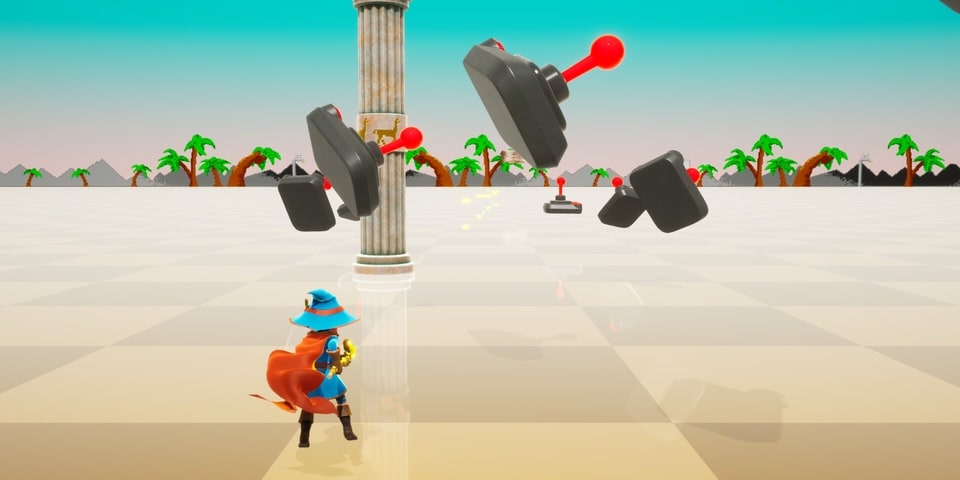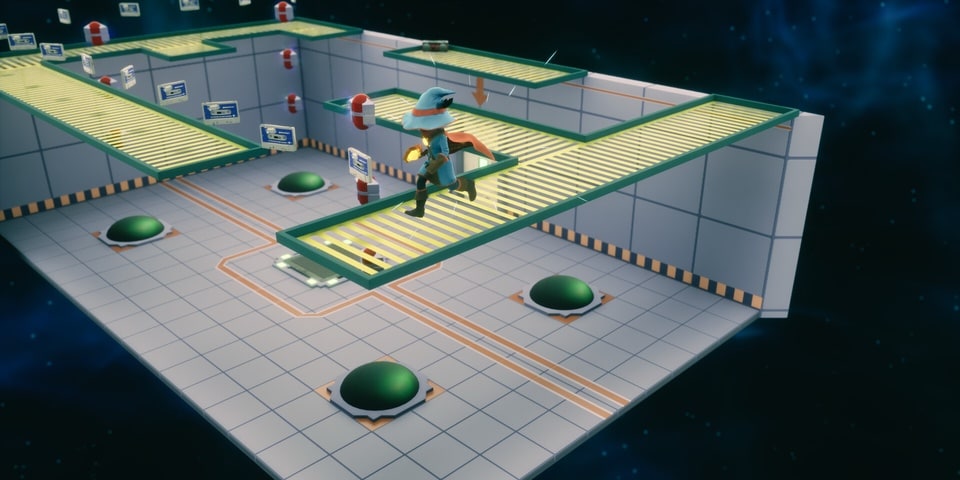We’re nearly a decade on from the original Lumo, a game that, while it was clearly filled with love for old school isometric puzzling, came up a little short. Lumo 2 looks to better that game, bringing greater fidelity, new tricks and genres, and with hundreds more rooms and puzzles, platforming and adventuring.
You can immediately appreciate that Lumo 2 is more detailed and visually varied than its predecessor, drawing on many more influences for its rooms and minigames, from puzzles that requiring perspective shifts to genre inserts like a side-scrolling shooter. There is no doubt Lumo 2 is a homage to the 8-bit era as a whole, with references to a lot of different games, many of which I admit passed me by, and is clearly intent on honouring the developers who pioneered those games.
The world of Lumo 2 is split into three distinct areas, one in space, one in a desert, and one in a spooky castle. In each of these worlds the main point is to collect the scattered paint to fill the cauldron related to that world back at the hub area, and to do this you need to explore every nook and cranny. You will start with a fixed view of rooms and can only move to where the camera allows you to see, but borrowing from the metroidvania, exploration will eventually unlock a double jump and ability to rotate the camera, offering new perspectives in rooms and showing new paths to take. You will also have a light for your wand which when lit will show hidden paths and doorways.
Puzzles can be fairly simple to overcome, or be much more complex and require precise timing to land on platforms and avoid obstacles. In the original Lumo, platforming was clunky and inaccurate. Unfortunately, the same applies to Lumo 2. The jump is just a bit too floaty, and there’s only a light hint of a drop shadow to show where you might land, and even that isn’t always accurate. It got to a point where in some rooms I was questioning my own depth perception (which according to my optician is fine), seeing the wizard missing platforms that he should have landed on. It is most frustrating in rooms with moving platforms where misjumps have you dropping down, and that could mean in some rooms falling to a lower level and trying to find your way back. There is no map in Lumo 2, so your choices are to memorise the layout or draw it out.
The wizard’s movement is also a bit slow. It isn’t that noticeable in the smaller rooms, but in wide open areas the running speed seems incredibly sluggish as you move between the puzzles. This really does drag down the experience, and combined with the inaccurate and frustrating platforming,
Lumo 2 becomes a game you are fighting against to play through, instead of taking in the various inspirations and nods that inspired the game. And that is part of the disappointment, because Lumo 2 really shines when it throws non-platforming levels at you, and you can absolutely feel the love and joy that was put into those creations. If this was a collection of minigames that you jumped between without the platforming, Lumo 2 would be fantastic.





